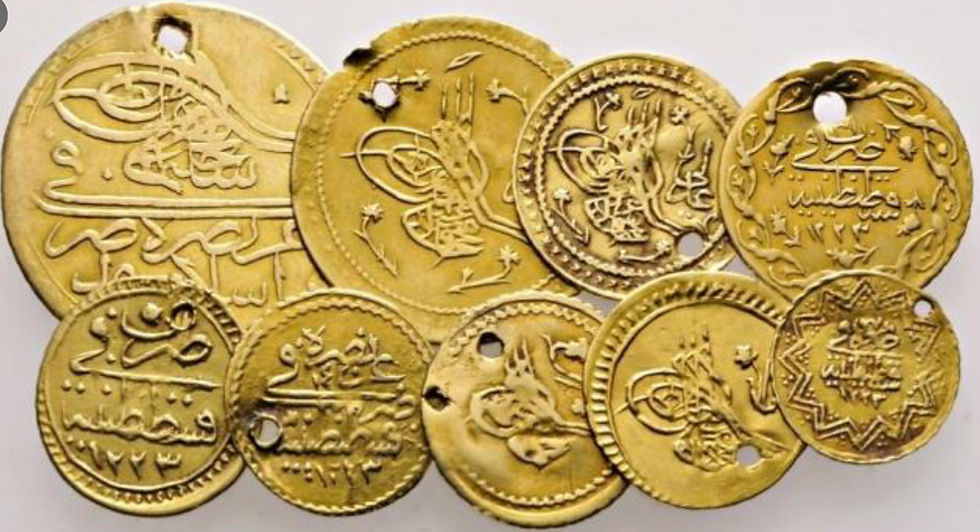D - 14: How the Genovese Bankers created a Golden Age and then lost it
- hbanziger
- Jun 27, 2020
- 3 min read
Updated: Mar 26, 2021
Most of us have heard of the Spanish Treasure Fleet, which sailed every year from Havana to Seville with the annual silver production of Potosi in its hulls. The convoy system started in 1566 and continued to 1790. The wealth of the Treasure Fleet was beyond imagination and needed to be properly protected. Each year about 10 to 20 million silver pesos (= US silver dollars) were shipped. Still today, treasure hunters pore over old maps to find wrecked Spanish Galleons full of silver on the hidden reefs of the Bahamas.

Reales or Pieces of Eight (1/8 of a Thaler – or spoken in English: Dollar)
The inflow of silver was huge and caught the Spanish Monarchy a bit by surprise. How could they handle so much money? It helped though for paying for the many wars Spain was engaged in. There was the war in the Netherlands (1568 – 1648), the wars with the Ottomans in Hungary, the sea battles of Prevezza (1538) and Lepanto (1571), the siege of Malta (1566), many battles in Tunis and Algiers, the Spanish Armada against England in 1588. All these wars were terribly expensive and Spain became critically dependent on the flow of silver from the Americas. We already know how costly galleys were to build, man and maintain. Modern siege warfare which needed a big artillery park was very expensive too. Keeping entire counties garrisoned like the Netherlands was a complete money pit.

Capture of the Treasure Fleet by the Dutch in 1628 – a catastrophe for the Spanish Treasury
Since the soldiers of all Spanish armies expected to be paid in gold, major exchange operations had to be conducted. And who was better equipped to deal with this challenge than the Genovese who had supplied Europe for centuries with gold from North Africa. But contrary to 100 years earlier, the Ottomans now controlled all routes to gold. The access to Nubia up the Nile was in their hands, as well as all North African departure points for the Sahara routes to central Africa.
The fact that Genoa had lost all colonies in Greece and on the Black Sea removed most of the conflict of interest with the Ottoman Empire. Genovese traders were perfect intermediaries. Of course, there was this little issue of the big Genovese Fleet under Andrea Doria. But he and Barbarossa avoided a direct confrontation for most of the time. Both knew about the business and how dependent they were on each other. Doria needed to buy gold in exchange for silver. Barbarossa the opposite since silver was the official Turkish currency.

Ottoman gold coins
These operations were so huge that the Genovese had to split them over many centers to avoid moving the bid offer spread of the gold – silver exchange. Parts of it were conducted in the Netherlands, some in Vienna, some in Rome and a considerable amount through Venice, Genoa’s archrival. The Genovese could thus use their wide network of contacts to the maximum and put it to good use.
For a few years, we now have access to the private archives of some leading Genovese banking families: the Durazzo, the Pallavicini, Spinola, Invrea and Pichenotti who’s account records and letters give us an accurate picture of the enormous sums of silver they handled. To illustrate it with one operation, let’s focus on Venice. Silver was first shipped from the Spanish ports of Barcelona, Cartagena, Seville and Alicante to Genoa where it was repackaged and then sent to Livorno for transportation to Venice over the land route. All properly controlled, coordinated and well protected by soldiers. It was a most lucrative trade. The Genovese were able to charge roughly 10% for the entire operation. No wonder many of Genoa’s most beautiful palaces were built during this time. It was Genoa’s Golden Age! Literally.

The Spinola-Doria Palace in Genoa
Whilst the amount of silver which arrived with the Treasure Fleet every year fluctuated (by factor two), the money the Spanish Crown spent on its war efforts was more or less fixed. Of course, the wealthy Genovese bankers would lend to the Crown to help out and make even more money on these bridge loans. Over time however, the Genovese bankers became major holders of Spanish sovereign debt and in the end dependent on their debtor. The inevitable eventually happened. The flow of silver dwindled to a level where the Spanish Crown had no other option than to default. The Genovese became a republic rich on worthless paper from Spain. It was ripe for picking by Napoleon who exploited the population’s discontent ruthlessly. The Golden Age had come to a crashing end. Another victim of disregarding concentration risk!







Comments